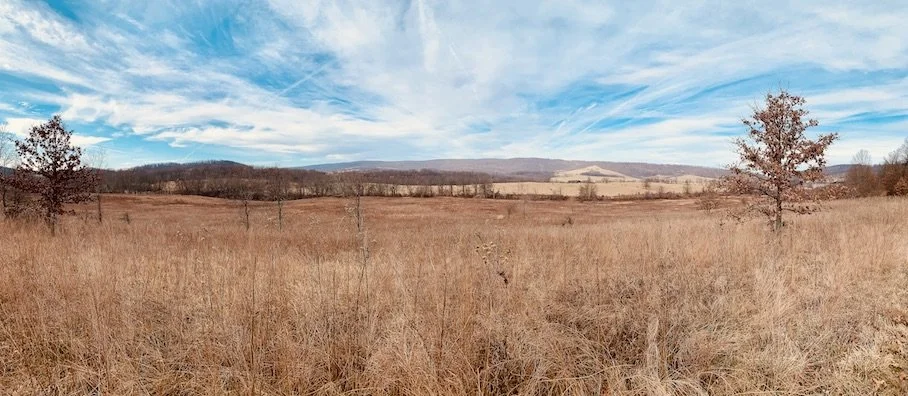What We Do
Our Mission
Shenandoah Valley Trees, Inc. (“SVT”) is a volunteer, community-based, non-profit organization formed to protect, enhance, and restore the tree canopy, woodlands, and forests of the greater Shenandoah Valley.
SVT’s vision is to promote the healthy grow and development of native woodlands and forests in the greater Shenandoah Valley, working alongside our communities, businesses, and local governments to enhance and protect the local environment while promoting outdoor recreation, sustainable land development, and the strategic use of woodland resources.
We will achieve our vision primarily through community programs focusing on science-based education and hands-on fieldwork growing, distributing, planting, and maintaining trees within the greater Shenandoah Valley. Representative activities and programs entail:
• Field-based, hands-on educational offerings regarding planting, ongoing care, and maintenance of native trees
• Self-paced educational resources (videos, newsletters, guides, flyers, blog posts) available on-demand for our volunteers
• Coordinated and planned residential and commercial plantings
• Reforestation projects involving agricultural land no longer in use
• Supplemental plantings to strengthen existing woodland lots
• Riparian buffer restoration and improvement of local streams, lakes, and wetlands
• Urban plantings in local community main street & downtown areas done in coordination with city and local governments
• Distribution and planting arrangements with partner and civic organizations such as local rotary clubs, 4-H chapters, church groups, and similar.
Our primary measure of success will be the total number of native Virginia trees that our volunteers and communities have placed in the ground.
Lastly, the initiatives led by SVT will:
• Provide for a more diverse and inclusive economy by supporting local jobs for nursery workers, arborists, and equipment operators,
• Improve the environment by eradicating non-native species, and in-turn increasing the resiliency of our ecosystem, and
• Create, develop, and improve our woodland resources and reserves for use by future generations.
The Shenandoah Valley - Land, Ecology, and People
Our Land
Geographically, the Shenandoah Valley lies between the Blue Ridge Mountains in the east, and the Allegheny Mountains in the West. The valley is approximately 150 miles in length and extends 25 miles wide, beginning in the north near Harper’s Ferry, West Virginia, and extending south to the James River.
Virginia Counties: Frederick, Clarke, Shenandoah, Warren, Rockingham, Page, and Augusta.
West Virginia: Berkeley, and Jefferson.
The Shenandoah Valley is home to Shenandoah National Park.
Regional Ecology
The Shenandoah Valley’s natural features include well-exposed strata of the Blue Ridge and Appalachian Mountains, diverse animal and plant populations and habitats migratory bird stop-over points and forested watersheds that perpetuate numerous streams flowing from uplands to lowlands.
Oak is the most common tree, closely followed by hickory. The natural areas of the Valley are homes to several rare plants, such as American ginseng, formally called Panax quinquefolius. This plant is a perennial herb, meaning that, unlike annual plants, it will return each year after the winter season. It is one of the most valuable non-timber products of Eastern North American forests because it has medicinal properties.
Remnants of boreal forests remind us that continental glaciers came near.
The forests of the valley provide a wonderful habitat for birds, whether they are in the area temporarily for migratory purposes or they live year-round. There are 196 species of birds in Shenandoah. Of these 196, about 30 are permanent residents. The latter category includes red-tailed hawks, wild turkeys, barred owls, Carolina chickadees, and tufted titmice.
Notable mammals found in Shenandoah Valley include spotted skunks, black bears, bobcats, shrews, moles, voles, coyotes, white-tailed deer, big brown bats, and grey squirrels. Some, like deer and squirrels are more likely to be observed by visitors, while others, such as bobcats, are more elusive.
Our People
The Shenandoah Valley is a vibrant rural region spanning 140 miles along the border of Virginia and West Virginia. The area has a rich history, stunning natural resources — including the Shenandoah National Park and Appalachian Trail — and one of the country’s most productive agricultural sectors.
Today, Shenandoah Valley residents are driving economic growth through innovation and entrepreneurship. Fueled by a spirit of resilience, people in the area are forming new ventures despite the challenges of the coronavirus pandemic. Increasingly, people see the valley as a place where someone can have it all — a quality job, affordable living, work-life balance, and access to world-class outdoor recreation.



